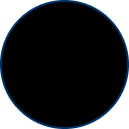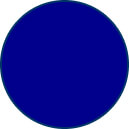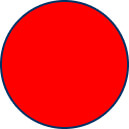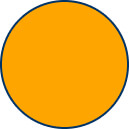Hooking the Big One: Best Lure Colors for Muddy and Clear Water

If you've ever found yourself staring at a tackle box full of lures, wondering which one will help you land that trophy catch, you're in the right place. In this blog, we’ll clear the waters and help you choose the perfect lure color for any fishing condition. Whether you're dealing with crystal-clear lakes or murky rivers, we've got the tips and tricks you need to make your next fishing trip a success. So, grab your gear and let's dive in!
Key Takeaways
- Best Lure Color for Muddy Water — In muddy water, fish can’t see very well and rely on contrast to hunt their prey. Use fishing lures that are fluorescent or brightly colored.
- Best Lure Color for Clear Water — In clear water, fish can see easily, making them more wary of lures. Choose fishing lures that mimic the color of their natural prey.
- Versatile Lure Colors — Some lure colors can be seen in both clear and muddy water. Black lures are particularly effective in both conditions because they create a distinct silhouette in the water.
- Water Clarity Lure Color Chart — Use this table to select the best lure color for your fishing conditions by water clarity.
- Types of Lures by Water Clarity — Water clarity also impacts the type of fishing lure you should use. Use lures that look and act like natural prey in clear water, and lures that move and make noise in muddy water.
Lure Colors for Different Water Clarities
Water clarity is how transparent or how murky the water is. This is influenced by the amount of suspended particles, algae, and other substances in the water. Lure color and water clarity directly affect a fish's ability to see and be attracted to the lure you choose.
In clear water, colors retain their vibrancy and are easily discernible, allowing fish to see and react to natural hues that mimic their prey (referred to as ‘matching the hatch’). However, in muddy water, the suspended particles and reduced light penetration cause colors to appear duller and less distinct.
Choosing the right lure color for the water clarity you’re fishing in is crucial because different colors can simulate the light conditions and prey types that fish are accustomed to in their specific environment. This means that mastering lure selection increases your chances of a successful day on the water.
“As a rule of thumb, the darker the water, the more colorful and shiny your lure
should be, like chartreuse, reds, and bright greens. The clearer the water, the
more natural colors – whites, blacks, baitfish patterns.”
- Adam Cunningham,
Fishing Category Marketing Specialist – Academy Sports + Outdoors

Best Lure Color for Muddy Water
In muddy water — also known as stained or murky water — visibility is significantly reduced because light can’t penetrate the water as easily. This means that fish rely more on contrast and vibrations to find their food than sight in these conditions. You’ll want to use brightly colored or fluorescent lures to catch a fish’s attention.
Best Lure Color for Clear Water
In clear water, fish can see better and are more likely to scrutinize potential prey. Unlike in muddy water, fish will rely on their sight to hunt. Because of this, it’s important to choose lure colors similar to their natural prey, like white, brown, and gray.
Versatile Lure Colors
Some lure colors provide enough visibility or contrast in both muddy and clear water conditions to be effective. Black lures are especially effective in both conditions because they have a distinct silhouette that fish can see regardless of water clarity.
When selecting the best lure color for your next fishing adventure, reference our water clarity lure color chart.
| Water Clarity Lure Color Chart | |||
|---|---|---|---|
| Lure Color | Color Sample | Muddy Water | Clear Water |
|
Chartreuse (Light Green) |

|
✔ |
✔ |
|
Dark Green |

|
|
✔ |
|
Light Brown |

|
|
✔ |
|
Dark Brown |

|
|
✔ |
|
Gray |

|
|
✔ |
|
Silver |

|
✔ |
✔ |
|
Black |

|
✔ |
✔ |
|
White |

|
✔ |
✔ |
|
Gold |

|
✔ |
✔ |
|
Blue |

|
✔ |
|
|
Purple |

|
✔ |
|
|
Red |

|
✔ |
|
|
Orange |

|
✔ |
|
|
Color Combinations |

|
✔ |
|
Types of Lures by Water Clarity
There are various types of lures, all suited to different fishing activities and conditions. Each lure type behaves differently in water, which can increase or decrease their visibility depending on water clarity.
Like lure color, lure type should be chosen based on how fish hunt. In clear water, focus on lures that look and act like their natural prey. In muddy water, focus on lures that create noise and motion. We’ve gone into more detail in the table below.
| Lure Type by Water Clarity | |||||
|---|---|---|---|---|---|
| Lure Type | Image | Description | Fishing Activity | Muddy Water | Clear Water |
|
Crankbaits |
Hard-bodied lures that resemble small fish and dive and wobble when retrieved |
Trolling and casting |
✔ |
✔ |
|
|
Spinnerbaits |
Lures with spinning blades that create flash and vibration |
Casting around structures and slow retrieves |
✔ |
|
|
|
In-Line Spinners |
Lures with a spinning blade that rotates around a straight wire shaft |
Casting and retrieving in streams, rivers, and lakes |
✔ |
|
|
|
Weighted lures with a lead head and a trailing hook |
Bottom fishing, vertical jigging, flipping and pitching |
✔ |
✔ |
||
|
Flexible, lifelike lures that mimic worms, grubs, or other prey |
Texas rigging, Carolina rigging, drop shotting, wacky rigging |
|
✔ |
||
|
Topwater |
Lures designed to float on the surface and create a disturbance |
Surface fishing, casting in calm waters, fishing near vegetation |
✔ |
✔ |
|
|
Metal lures shaped like a spoon that wobble and flash as they move |
Casting, trolling, vertical jigging |
✔ |
✔ |
||
|
Swimbaits |
Realistic lures that mimic the swimming action of fish; can be hard or soft |
Casting, retrieving in open water, targeting large predatory fish |
|
✔ |
|
|
Lightweight lures made from feathers, fur, and synthetic materials |
Fly fishing |
|
✔ |
||
|
Buzzbaits |
Similar to spinnerbaits but with a propeller-like blade that creates noise and commotion on the water's surface |
Surface fishing, fishing in shallow waters, casting around structures |
✔ |
|
|
|
Hard-bodied lures that can float, sink, or suspend; can usually dive and wobble |
Casting and trolling |
✔ |
✔ |
||
|
Bladed and combines the vibration of a jig with the flash of a spinnerbait |
Casting around structures and slow retrieves |
✔ |
|
||
|
Jerkbaits |
Hard-bodied lures designed to mimic injured baitfish |
Casting and retrieving |
|
✔ |
|
|
Thin, metal lures that vibrate strongly when retrieved |
Vertical jigging and deep-water casting |
✔ |
✔ |
||
Other Lure Color Selection Considerations
Aside from water clarity, there are a few conditions you should consider when selecting the best lure color, including:
- Light Conditions: Bright colors work well in low light or overcast conditions, while natural colors are better for bright, sunny days.
- Fish Species: Different fish have varying color preferences and visual capabilities, so tailor your color choice to the species you're targeting.
- Local Prey: ‘Match the hatch’ — match the color of your lure to the natural prey in the area to make it more convincing and appealing to fish.
- Water Type: Freshwater lures are typically natural or bright colors, while saltwater lures are typically reflective and high contrast.
- Water Depth: Blues and greens remain visible in deeper waters.
- Fishing Pressure: In heavily fished areas, fish might be wary of common lure colors. Try unconventional colors to provoke a strike.
Because conditions can change quickly, it’s a good idea to keep multiple lure colors and types in your tackle box.
Have Fun Out There!
And there you have it, anglers! Armed with the right lure colors for both muddy and clear waters, you're now ready to tackle any fishing challenge that comes your way. Happy fishing, and may your next trip be filled with stories of the one that didn't get away.
Need to stock your tackle box? Check out the wide selection of baits and lures available at Academy Sports + Outdoors!
















